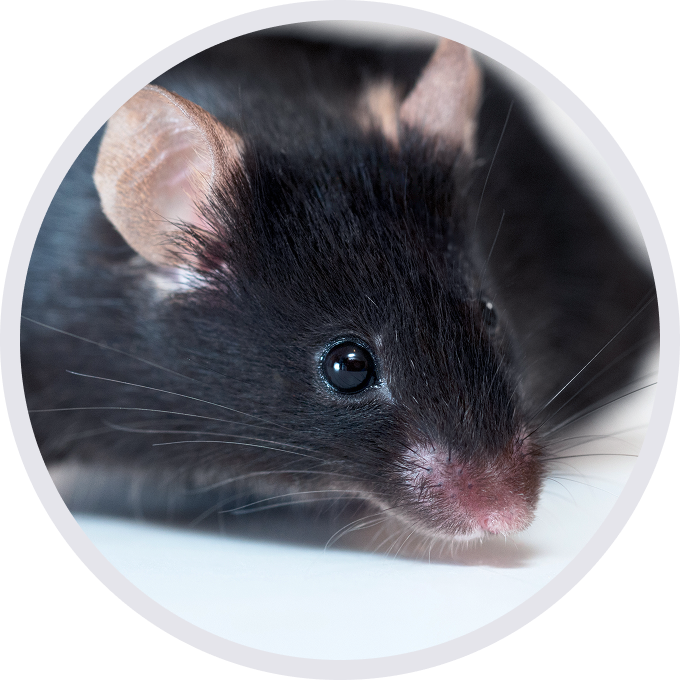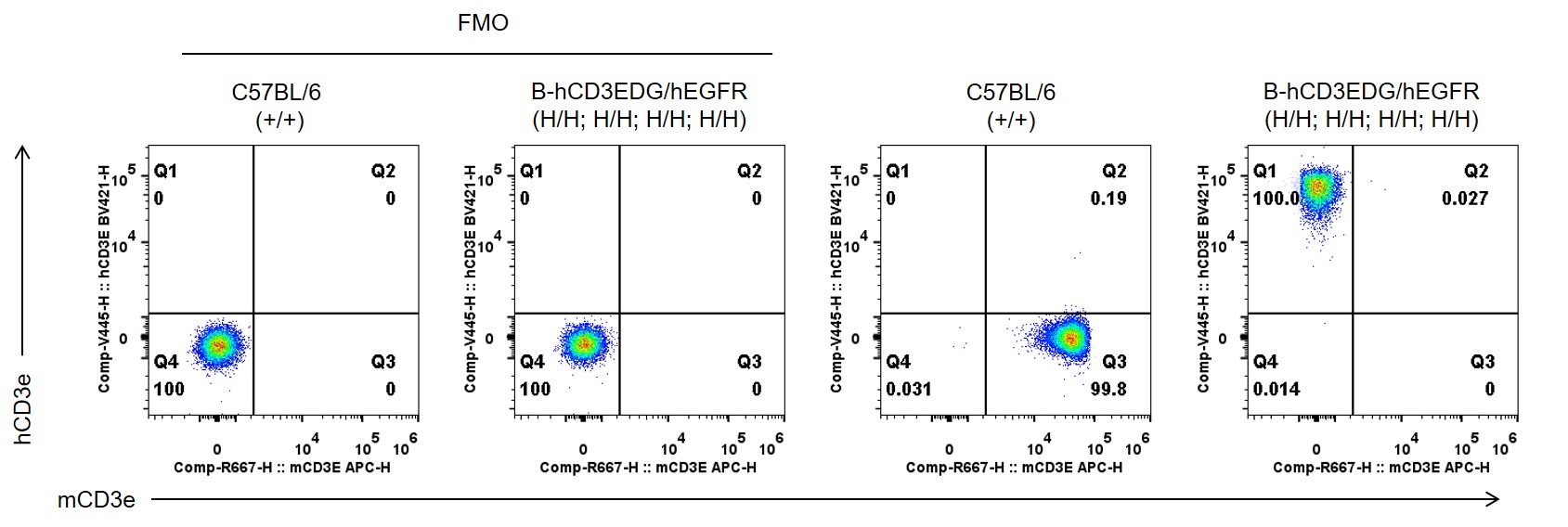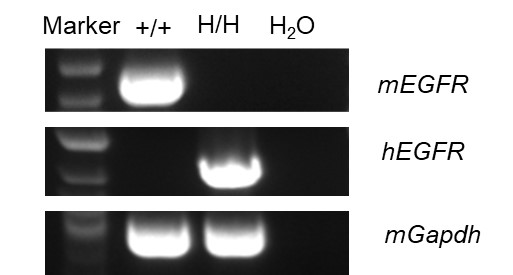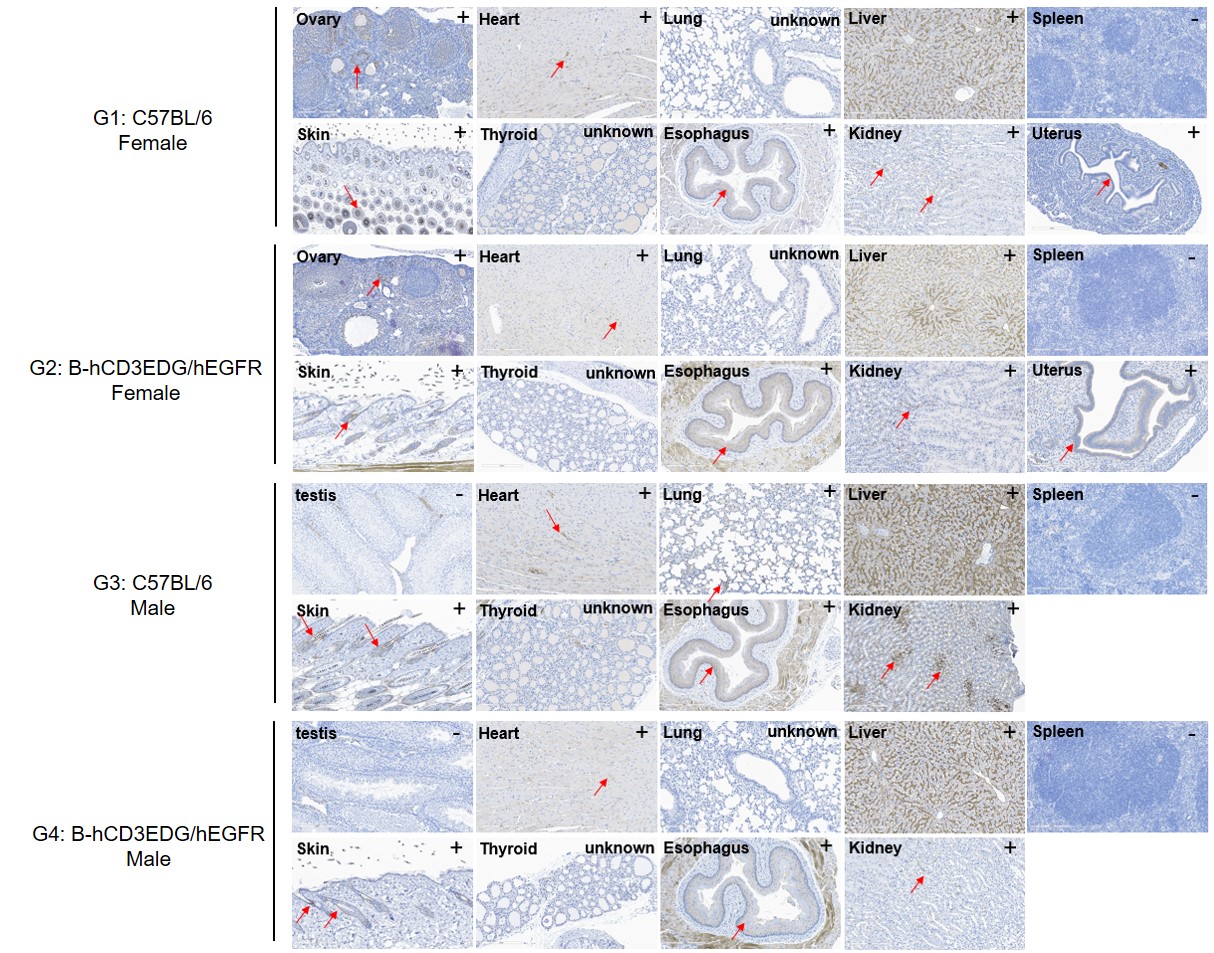
C57BL/6-Cd3etm1(CD3E)Bcgen Cd3dtm1(CD3D)BcgenCd3gtm1(CD3G)Bcgen Egfrtm2(EGFR)Bcgen/Bcgen • 113562

| Product name | B-hCD3EDG/hEGFR mice |
|---|---|
| Catalog number | 113562 |
| Strain name | C57BL/6-Cd3etm1(CD3E)Bcgen Cd3dtm1(CD3D)BcgenCd3gtm1(CD3G)Bcgen Egfrtm2(EGFR)Bcgen/Bcgen |
| Strain background | C57BL/6 |
| NCBI gene ID | 916,915,917,1956 (Human) |
| Aliases | T3E; TCRE; IMD18; CD3epsilon; T3D; IMD19; CD3DELTA; CD3-DELTA; T3G; IMD17; CD3GAMMA; CD3-GAMMA; ERBB; ERRP; HER1; mENA; ERBB1; NNCIS; PIG61; NISBD2 |

CD3E expression analysis in wild-type C57BL/6 mice and homozygous humanized B-hCD3EDG/hEGFR mice by flow cytometry. Spleen T cells were collected from wild-type C57BL/6 mice (+/+) (Female, 6-week-old, n=1) and homozygous B-hCD3EDG/hEGFR mice (H/H; H/H; H/H; H/H) (Female, 6-week-old, n=1). Protein expression was analyzed with anti-human CD3E antibody (BD Horizon™, 562426) and anti-mouse CD3E antibody (Biolegend, 100312) by flow cytometry. Human CD3E was exclusively detectable in homozygous B-hCD3EDG/hEGFR mice, but not in wild-type C57BL/6 mice.

CD3E expression analysis in wild-type C57BL/6 mice and homozygous humanized B-hCD3EDG/hEGFR mice by flow cytometry. Blood T cells were collected from wild-type C57BL/6 mice (+/+) (Female, 6-week-old, n=1) and homozygous B-hCD3EDG/hEGFR mice (H/H; H/H; H/H; H/H) (Female, 6-week-old, n=1). Protein expression was analyzed with anti-human CD3E antibody (BD Horizon™, 562426) and anti-mouse CD3E antibody (Biolegend, 100312) by flow cytometry. Human CD3E was exclusively detectable in homozygous B-hCD3EDG/hEGFR mice, but not in wild-type C57BL/6 mice.

Strain specific analysis of EGFR mRNA expression in wild-type C57BL/6 mice and B-hCD3EDG/hEGFR mice by RT-PCR. Liver RNA were isolated from wild-type C57BL/6 mice (+/+) and homozygous B-hCD3EDG/hEGFR mice (H/H; H/H; H/H; H/H), then cDNA libraries were synthesized by reverse transcription, followed by PCR with mouse or human EGFR primers. Mouse Egfr mRNA was only detectable in wild-type mice. Human EGFR mRNA was exclusively detectable in homozygous B-hCD3EDG/hEGFR mice but not in wild-type mice.

Immunohistochemical (IHC) analysis of EGFR expression in homozygous B-hCD3EDG/hEGFR mice. The ovary, testis, heart, lung, liver, spleen, skin, thyroid, esophagus, kidney and uterus were collected from C57BL/6 mice (+/+) (G1: female, 5-week-old, n=2; G3: male, 5-week-old , n=2) and homozygous B-hCD3EDG/hEGFR mice (H/H; H/H; H/H; H/H) (G2: female, 5-week-old, n=2; G4: male, 5-week-old , n=2) , analyzed by IHC with anti-EGFR (abcam, ab32198). EGFR was detectable in both C57BL/6 mice and homozygous B-hCD3EDG/hEGFR mice because of antibody crossover. The arrow indicates tissue cells with positive EGFR staining (brown). “+” indicates that the tissue is positive, and “-” indicates that the tissue is negative. "unknown" means it can not be determined.